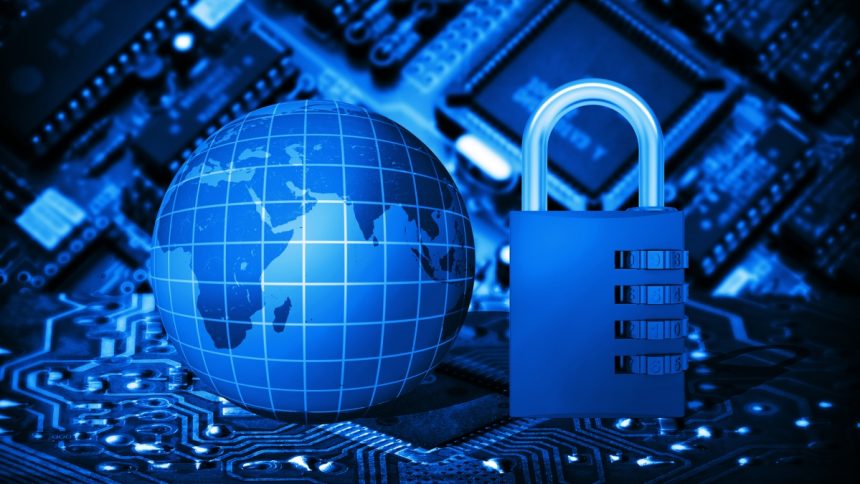Cybersecurity is crucial to any company’s IT infrastructure services in the modern digital era. Strong security measures must be put in place to safeguard sensitive company data and preserve the integrity of your IT systems because cyber attacks are always evolving and getting more sophisticated. This in-depth guide will guide you through the best methods for protecting your IT infrastructure.
What is an IT Infrastructure
Before diving into specific cybersecurity practices, it is essential to understand your IT infrastructure. This involves identifying all hardware, software, networks, and data storage systems used within your organization. Conducting a thorough inventory of your IT assets helps you identify potential vulnerabilities and understand where to focus your security efforts.
Implement Strong Access Controls
Access controls are fundamental to cybersecurity. They ensure that only authorized individuals can access specific resources and data within your organization. Here are some best practices for implementing strong access controls:
Use Multi-Factor Authentication (MFA)
Multi-factor authentication (MFA) enhances security by requiring users to present two or more forms of identification before accessing critical systems. These identifiers can include something they know (password), something they possess (security token), or something inherent to them (biometric verification).
Apply the Principle of Least Privilege
The principle of least privilege dictates that users should only have access to the resources necessary for their job functions. Regularly review and update access permissions to ensure employees do not have unnecessary access to sensitive data.
Enforce Strong Password Policies
Weak passwords are a common entry point for cyber attackers. Implement a strong password policy that requires complex passwords and regular password changes. Encourage the use of password managers to help employees manage their credentials securely.
Keep Software and Systems Updated
Outdated software and systems are vulnerable to cyber-attacks. Regularly updating your software, operating systems, and applications is crucial for maintaining security. Here’s how to manage updates effectively:
Enable Automatic Updates
Where possible, enable automatic updates to ensure your systems receive the latest security patches and updates immediately.
Conduct Regular System Audits
Perform regular IT system audits to identify outdated software or systems. Prioritize updating critical systems more likely to be targeted by cyber threats.
Test Updates Before Deployment
Before deploying updates, especially on critical systems, test them in a controlled environment to ensure they do not cause compatibility or performance issues.
Use Firewalls and Antivirus Software
Firewalls and antivirus software are essential components of a robust cybersecurity strategy. They help protect your network and endpoints from malicious attacks. Here are some tips for effective use of firewalls and antivirus software:
Configure Firewalls Properly
Ensure that firewalls are correctly configured to block unauthorized access to your network. Regularly review and update firewall rules to adapt to changing security needs.
Deploy Endpoint Protection
Install antivirus and anti-malware software on all endpoints, including computers, servers, and mobile devices. Keep this software up to date to protect against the latest threats.
Implement Intrusion Detection and Prevention Systems (IDPS)
IDPS solutions monitor network traffic for suspicious activity and can automatically block potential threats. Implementing IDPS helps detect and prevent attacks in real-time.
Encrypt Sensitive Data
Encryption is an essential safeguard for securing sensitive data against unauthorized access. By converting data into an unreadable format, encryption ensures that intercepted information remains unintelligible without the decryption key. Here are some best practices for encryption:
Encrypt Data at Rest and in Transit
Ensure that sensitive data is encrypted when stored on devices (data at rest) and transmitted over networks (data in transit). Use strong encryption standards, such as AES-256, to secure your data.
Use VPNs for Secure Remote Access
Virtual Private Networks (VPNs) encrypt the connection between remote devices and your network, providing secure access to your IT infrastructure. Implement VPNs for employees working remotely to protect data transmission over public networks.
Manage Encryption Keys Securely
Encryption keys are critical to the security of your encrypted data. Use secure key management practices to store and protect encryption keys and limit access to keys to authorized personnel only.
Educate and Train Employees
Employees are often the weakest link in cybersecurity. Human error can lead to security breaches, so educating and training your workforce on cybersecurity best practices is crucial. Here are some tips for practical cybersecurity training:
Conduct Regular Training Sessions
Organize regular training sessions to educate employees about the latest cybersecurity threats and how to recognize them. Topics should include phishing, social engineering, and safe browsing practices.
Create a Cybersecurity Awareness Program
Develop a comprehensive cybersecurity awareness program that includes guidelines and resources for employees. Encourage a culture of security awareness within your organization.
Simulate Phishing Attacks
Conduct simulated phishing attacks to evaluate employees’ proficiency in identifying and responding to phishing attempts. Use the results to identify areas needing additional training.
Develop and Implement an Incident Response Plan
Even with top-notch preventative measures, security incidents can still happen. Crafting a robust incident response plan ensures your organization can swiftly and effectively mitigate the impact of a breach. Here’s how to develop and implement such a plan:
Establish an Incident Response Team
Create a dedicated incident response team responsible for managing and responding to security incidents. Ensure that team members are trained and equipped to handle various cyber threats.
Define Incident Response Procedures
Develop clear procedures for identifying, containing, eradicating, and recovering from security incidents. Ensure that all employees know their roles and responsibilities during a breach.
Conduct Regular Drills and Reviews
Conduct incident response drills regularly to test the effectiveness of your plan. After each drill, review the response and make necessary improvements to the plan.
Monitor and Analyze Network Activity
Network activity monitoring helps detect and respond to potential threats before they can cause significant damage. Implement network monitoring tools and practices to enhance your cybersecurity posture:
Deploy Security Information and Event Management (SIEM) Systems
SIEM systems gather and analyze log data from diverse sources within your network to identify suspicious activities. Implementing SIEM solutions provides real-time insights into your network’s security.
Set Up Alerts for Unusual Activity
Configure monitoring tools to generate alerts for unusual or unauthorized activity. Establish thresholds and criteria for alerts to ensure that potential threats are identified promptly.
Regularly Review Logs
Review network logs regularly to identify patterns or anomalies that may indicate a security breach. Use log analysis tools to streamline the review process and detect potential threats more efficiently.
Conclusion
Securing your IT infrastructure with the help of an IT Support Company is a continuous process that demands vigilance, proactive measures, and ongoing improvement. By adhering to cybersecurity best practices, you can significantly mitigate the risk of cyber-attacks and protect your organization’s sensitive data. Remember, cybersecurity is not solely the IT department’s responsibility; it requires a collective effort from every member of your organization. Stay informed, stay vigilant, and prioritize cybersecurity to safeguard your IT infrastructure effectively.
Lynn Martelli is an editor at Readability. She received her MFA in Creative Writing from Antioch University and has worked as an editor for over 10 years. Lynn has edited a wide variety of books, including fiction, non-fiction, memoirs, and more. In her free time, Lynn enjoys reading, writing, and spending time with her family and friends.















